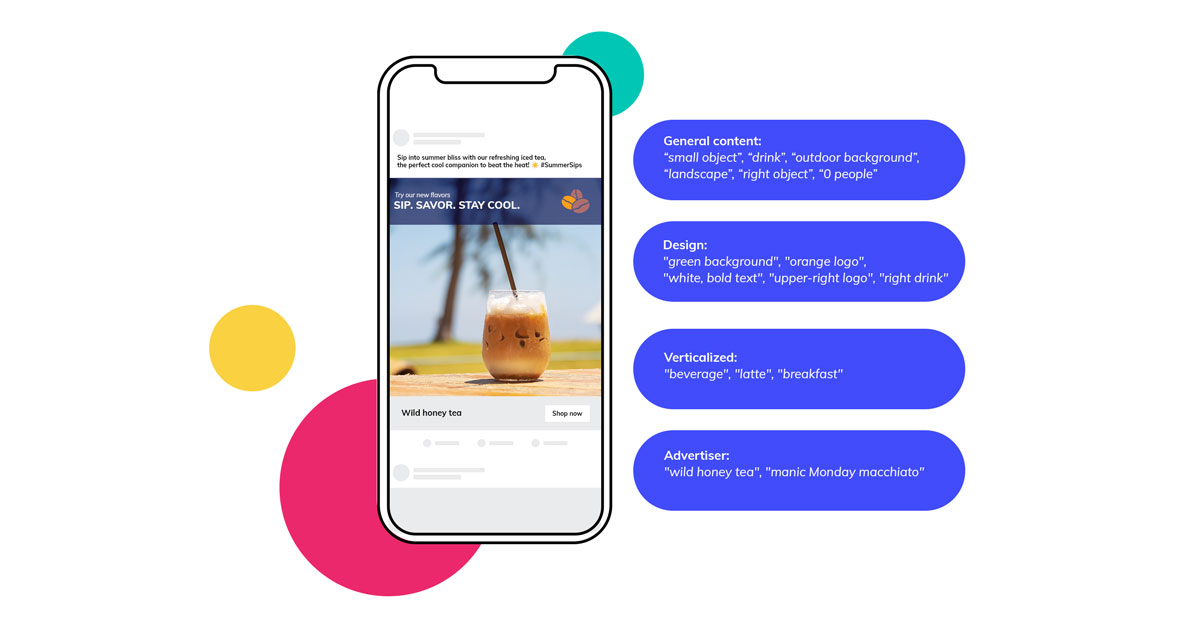


What’s in a name? Shakespeare already pointed out that the label doesn’t matter when it comes to flowers. After all, “a rose by any other name would smell as sweet.”
However, regarding social advertising, labels carry a lot of weight, especially on platforms like LinkedIn.
With over 830 million active users, LinkedIn is one of the most popular platforms for professional networking. It offers a massive potential audience for businesses, and its inherent ability to target highly specific audiences makes it such a powerful advertising platform.
With the power to deliver such granular attention comes the responsibility of ensuring your ads are consistently relevant and engaging to your audiences. That's where creative taxonomy comes in to help you enable more efficient management, optimization, and analysis of ad campaigns.
Ensuring relevancy in LinkedIn ads
Everyone’s had the experience of seeing an ad on their social media feed that seems completely out of left field—the ads that make you think, “Do you even know me?” Social media audiences expect personalized content on their channels, and they’ll skip over any ad that isn’t somehow attuned to their interests, preferences, or habits.
Figuring out which creative elements perform best for certain audiences can help social media advertisers deliver hyper-relevant content to their target audiences. However, media and creative teams aren’t in the room to witness their audience’s reaction—or lack of reaction—to their content and to know what creative they should deliver to which audiences. Instead, they use taxonomy to categorize and organize their ad campaigns, ensuring that content is accurately labeled and easily retrievable for analysis, optimization, and targeting.
What is taxonomy?
Taxonomy is the science of classifying things based on their similarities and differences. It provides a structured framework for organizing and categorizing creative elements. This approach enables efficient retrieval, analysis, and optimization of creative content across different campaigns, channels, and audience segments.
Creative labeling involves assigning descriptive tags or labels to components such as images, videos, text, and other media assets. These labels are based on specific attributes, themes, or characteristics of the creative content. For example, in an advertising campaign, taxonomy may include categories of labels:

To illustrate how using these labels would work in the real world, imagine a social media advertiser with two versions of the same ad. The ads are distinguished by their imagery, with one ad featuring a landscape photo and the other featuring the brand’s animated character. The advertiser labels the first one with the “landscape” descriptive tag and the other with the “animated character” tag.
Later, after the ads are published, the advertiser begins to see patterns in how certain audiences engage with them. They realize that certain age demographics responded more to the animated character, while a different segment responded more to the ad featuring the landscape. With this kind of insight, advertisers can consider these preferences and build creative strategies around them, ensuring more consistently relevant content and dynamic creative optimization.
Improving targeted advertising with AI
Now that you see how taxonomy works, you likely recognize how time-consuming it would be to implement and manage taxonomy with manual processes. Think of the enormous time and effort it would take someone to manually label every piece of social media content, track its engagement, and draw those correlations without the help of digital tools and AI.
Today, AI is used for creative taxonomy to help advertisers drive an even deeper understanding of the creative elements that truly drive performance. It’s also helping them surface and share those insights faster and more reliably than ever before.
Here are some of the features of taxonomy in Flashtalking’s ad tech platform that helps creative and media teams get better insights into ad performance and deliver highly targeted advertising campaigns:
- Descriptive omnichannel, metadata: Allows for manageable, customizable, and actionable analysis of creative performance across various channels and platforms.
- Human-readable labels: Facilitate easier analysis and interpretation of creative data by team members.
- Aggregation and combination of metadata labels: Enables more customized analysis and insights by integrating multiple descriptive tags.
- Content-based evaluation: Provides quicker insights at lower impression volumes by evaluating content rather than specific creative or version levels.
- Standardized taxonomy: Enables cross-format and over-time analysis and evaluation of creative performance.
- Off-the-shelf labels: Offer clients pre-defined labels to discover insights based on evergreen creative assets and vertical-specific elements.
- Customized labels: Provide clients with flexibility to measure and optimize against specific elements, assets, and details relevant to their objectives.
- AI-based automated labeling: Enhances speed and reduces errors compared to manual labeling solutions.
- Direct integration with activation solutions: Automates identification and activation against relationship insights derived from taxonomy.
- Reporting hubs: Allows ongoing access and analysis of creative performance, trends, and insights via reporting platforms.
Learn more
Learn more about how to build meaningful engagement with your audiences through advertising on LinkedIn with Flashtalking.







